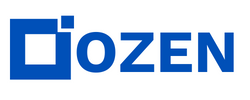PCB Modeling with Ansys Icepak
Welcome to another video by Ozen Engineering, Inc. As experts in all things ANSYS, including simulation with fluids, mechanical, electronics, and more, today we will focus on electronics thermal simulation using Ansys Icepak. Our topic is how to model PCBs, import traces and VIAs, or ECAD models into Icepak, and set up and execute different operating conditions like forced or natural convection.
Introduction to PCB Thermal Management
PCBs, with their complex geometry and multiple layers, require careful thermal management. They often have large copper spreads in power and ground planes, along with thermal VIAs that help spread heat from the package. A detailed conductivity map of the PCB is essential for accurate heat transfer simulation, which is possible in Ansys Icepak using the trace import feature.
Importing Trace Layouts
In Icepak, you can import the trace layout of the board and compute the locally varying orthotropic conductivity using a profile mesh size. Supported import formats include:
- ODB++
- EDF
- ANF
- Gerber
- BOL plus Info
- ICP2581
In this tutorial, we will import a typical PCB and solve two sample cases based on the trace layout information. We will also model layers separately for better accuracy.
Setting Up the Model
- Double-click on the PCB board.
- Under the geometry tab, import an ECAD file. We will use the NSOF natural neutral ANF format.
- Reposition the trace object if necessary to align with the coordinate system.
- Import the object and correct the thickness information on the layers. We will use copper and FR4 as materials.
- Define the grid density for mesh accuracy. For coarse mesh accuracy, multiply the minimum trace width by four, which comes to about 0.5 mm for this model.
- Model the layers separately and update the setup.
Conduction Only Model
We will build a conduction-only model by deactivating all components except the board. The cabinet will be auto-scaled to match the board size, and boundary conditions will be defined on the cabinet faces.
- Set the minimum Z face to a wall with a uniform temperature of 20°C.
- Set the maximum Z face to a wall with a heat flux of 20,000 W/m².
- Generate a mesh with a focus on resolving the thickness across the PCB.
- Set up the problem for conduction only, turning off flow and radiation.
- Run the solution and post-process the results to analyze temperature and conductivity distribution.
Convection Model
Next, we will activate all components and set up a convection model:
- Ensure the cabinet size covers all objects.
- Check and set the correct flow boundary conditions.
- Remesh the model with a coarser mesh for the convection simulation.
- Set up the problem to solve for flow using the zero-equation turbulence model.
- Run the solution, which will take longer due to the higher mesh count and additional equations.
- Post-process to analyze temperature distribution.
Thank you for watching this tutorial on PCB modeling with Ansys Icepak. We hope you found it informative and helpful.
Hello, welcome to another video by Ozen Engineering. As experts in ANSYS simulation, we will discuss electronics thermal simulation using classic ISPAC. We will cover modeling PCBs, importing traces and VIAs, and setting up different operating conditions like forced convection or natural.
PCBs have complex geometries and large copper spread in power and ground planes, along with thermal VIAs. Accurate heat transfer simulation requires a detailed conductivity map of the PCB.
ANSYS ISPAC allows importing trace layouts of the board and computing locally varying orthotropic conductivity using a profile mesh size.
Various import formats are available, such as ODB++, EDF, ANF, Gerber, BOL plus Info, and ICP 2581. In this tutorial, we will import a typical PCB and solve two sample cases based on the trace layout information. We will also demonstrate modeling layers separately for better accuracy.
First, double click on the PCB board and import an ECAD file or electronics CAD file. Choose the type, such as NSOF natural neutral ANF. Reposition the trace object if needed and adjust the resize object. Once the object is imported, correct the thickness information on the layers.
Define the grid density for accuracy. For coarse mesh accuracy, multiply the minimum trace width by four. For this model, the grid density comes to about 0.5 millimeters. Model the layers separately and do not need to recompute metal fractions. Now, import traces into the domain.
This process can take up to a minute or two. Once it's done, you will see the imported layers and vias. Correct the thickness information on the layers and define the mesh. After importing traces and vias, build a conduction-only model.
Deactivate or suppress all components except the board and perform a conduction-only simulation. Set up boundary conditions on the six faces of the cabinet. Generate a mesh around the solution and define the physics of the problem. Set a tighter energy convergence criteria for temperature.
Solve the problem and post-process the results. Thank you for watching.


